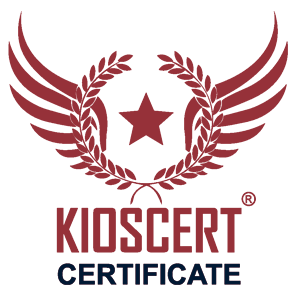
ISO 20000-1 Incident–Problem–Change Flow Design
Within the ISO 20000-1 framework, the design of Incident–Problem–Change flows is essential to ensure effective service management. These flows integrate ITIL-compliant processes, SLA/OLA definitions, CMDB relationships, major incident handling, root cause analysis, change board practices, reporting metrics, customer satisfaction, audit evidence, and integration with other standards such as ISO 27001 and ISO 22301.
This guide provides a practical roadmap for organizations seeking to build a sustainable, measurable, and auditable IT service management structure.
ITIL-Compliant Process Definitions
ISO 20000-1 requires service providers to adopt processes aligned with ITIL best practices. These processes must be standardized, repeatable, and measurable in order to maintain consistency and quality in IT services.
Key Processes
- Incident Management: Ensures fast restoration of services after disruptions.
- Problem Management: Identifies and eliminates root causes of recurring incidents.
- Change Management: Controls modifications to infrastructure, software, and services.
- Configuration Management: Keeps asset and configuration data accurate through a CMDB.
Benefits of ITIL Alignment
- Clear process ownership and responsibilities
- Reduction of risks and uncontrolled changes
- Improved service quality and customer trust
- Seamless integration with ISO 27001 and ISO 22301 requirements
SLA/OLA Setup and Measurement
Service Level Agreements (SLA) and Operational Level Agreements (OLA) are the cornerstones of service management. They define measurable expectations between service providers, customers, and internal teams.
Steps for SLA/OLA Implementation
- Define critical services and availability targets
- Establish measurable KPIs such as MTTR and uptime percentage
- Align OLAs with SLAs to ensure cross-team accountability
- Continuously monitor and report service performance
Measurement and Reporting
Performance should be measured through automated dashboards, with regular reports provided to stakeholders. Non-compliance must trigger corrective actions and CAPA processes.
CMDB and Asset Relationships
A Configuration Management Database (CMDB) is the backbone of service management, providing a single source of truth for asset and service relationships. It supports incident, problem, and change management by ensuring traceability.
Essential CMDB Elements
- Unique asset identification and categorization
- Relationships between services, applications, and infrastructure
- Change history logs for each configuration item
- Integration with monitoring and discovery tools
Benefits
- Improved root cause analysis through clear dependencies
- Faster incident and change resolution
- Better impact assessment for proposed changes
- Alignment with ISO 27001 risk and asset management requirements
Major Incident Scenarios
Major incidents are high-impact disruptions that significantly affect business operations or a large number of users. ISO 20000-1 requires organizations to have predefined scenarios and escalation procedures for handling such critical events.
Key Components
- Classification of incidents based on severity and impact
- Escalation matrix for communication and responsibility
- Predefined contingency and failover plans
- Simulation exercises and periodic testing
Note
Major incident procedures must be integrated with business continuity and information security plans.
Root Cause Analysis and Known Error Database (RCA & KEDB)
The main objective of Problem Management in ISO 20000-1 is to prevent the recurrence of incidents. This is achieved through Root Cause Analysis (RCA) and by maintaining a Known Error Database (KEDB).
Steps of RCA
- Gathering evidence from incidents
- Applying the “5 Whys” or Fishbone Diagram method
- Identifying the underlying cause affecting services
- Developing and implementing a permanent solution
KEDB Practices
- Recording all known errors
- Linking them to incidents and problems
- Updating the database as permanent fixes are applied
Change Advisory Board (CAB) Practices
Changes to IT services must be carefully assessed for risks and impacts. The Change Advisory Board (CAB) and Emergency CAB (ECAB) provide governance over this process.
CAB Roles
- Reviewing change requests
- Assessing risks and impacts
- Approving implementation and rollback plans
- Assigning responsibilities
Best Practices
- Regular meetings on a scheduled basis
- Using standard templates for change evaluation
- Documenting all decisions and outcomes
- Integrating security and continuity assessments
Reporting Dashboard and Metrics
According to ISO 20000-1, the performance of processes must be monitored through reporting dashboards and defined metrics.
Key Performance Indicators (KPI)
- SLA compliance rate
- Mean Time to Resolution (MTTR)
- Ratio of successful to failed changes
- Percentage of recurring incidents
Dashboard Design
Dashboards should be dynamic and interactive, showing real-time performance and highlighting bottlenecks.
Review and Improvement
Reports should be discussed regularly in management meetings and used to drive continual improvement initiatives.
Major Incident Scenarios
Major incidents are high-impact disruptions that significantly affect business operations or a large number of users. ISO 20000-1 requires organizations to have predefined scenarios and escalation procedures for handling such critical events.
Key Components
- Classification of incidents based on severity and impact
- Escalation matrix for communication and responsibility
- Predefined contingency and failover plans
- Simulation exercises and periodic testing
Note
Major incident procedures must be integrated with business continuity and information security plans.
Root Cause Analysis and Known Error Database (RCA & KEDB)
The main objective of Problem Management in ISO 20000-1 is to prevent the recurrence of incidents. This is achieved through Root Cause Analysis (RCA) and by maintaining a Known Error Database (KEDB).
Steps of RCA
- Gathering evidence from incidents
- Applying the “5 Whys” or Fishbone Diagram method
- Identifying the underlying cause affecting services
- Developing and implementing a permanent solution
KEDB Practices
- Recording all known errors
- Linking them to incidents and problems
- Updating the database as permanent fixes are applied
Change Advisory Board (CAB) Practices
Changes to IT services must be carefully assessed for risks and impacts. The Change Advisory Board (CAB) and Emergency CAB (ECAB) provide governance over this process.
CAB Roles
- Reviewing change requests
- Assessing risks and impacts
- Approving implementation and rollback plans
- Assigning responsibilities
Best Practices
- Regular meetings on a scheduled basis
- Using standard templates for change evaluation
- Documenting all decisions and outcomes
- Integrating security and continuity assessments
Reporting Dashboard and Metrics
According to ISO 20000-1, the performance of processes must be monitored through reporting dashboards and defined metrics.
Key Performance Indicators (KPI)
- SLA compliance rate
- Mean Time to Resolution (MTTR)
- Ratio of successful to failed changes
- Percentage of recurring incidents
Dashboard Design
Dashboards should be dynamic and interactive, showing real-time performance and highlighting bottlenecks.
Review and Improvement
Reports should be discussed regularly in management meetings and used to drive continual improvement initiatives.
